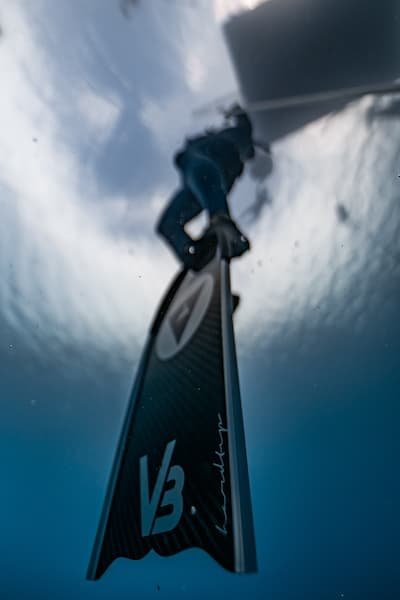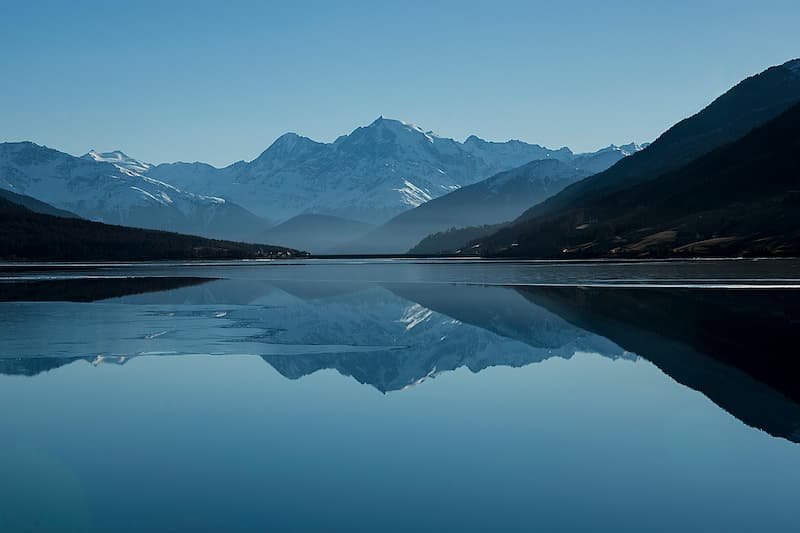
 Katie Wood
Freediver, Writer, Explorer
Katie Wood
Freediver, Writer, Explorer

 Katie Wood
Freediver, Writer, Explorer
Katie Wood
Freediver, Writer, Explorer
The outdoor industry has experienced an evolution from grassroots origins, where gear served as a functional tool to help adventurers connect with nature, into a commercial behemoth driven by hype, high prices, and a sense of exclusivity. What began with nature enthusiasts pooling resources for basic necessities like functional clothing has now morphed into a world of designer labels, seasonal drops, and a seemingly endless array of gear. Today, the outdoor industry caters not only to those who enjoy the outdoors, but also to fashion-conscious urbanites who might never step foot on a trail or the ocean. While this evolution has certainly increased the visibility of outdoor sports and expanded participation, it has also created significant barriers for those who might otherwise benefit from these activities.
One of the most striking changes in the outdoor industry is the ever-increasing price of gear. Brands like Patagonia, Arc'teryx, and The North Face, which once focused primarily on creating affordable, durable, and functional clothing for mountaineers and explorers, have become high-end fashion icons. With this shift came inflated prices, making outdoor activities less accessible to a broader audience. A casual glance at any outdoor retailer today reveals that high-performance jackets, pants, and shoes can easily run into hundreds, if not thousands, of dollars.
While some of this high-tech gear is undeniably valuable for those who truly push the limits in extreme environments, the vast majority of outdoor enthusiasts don't need the latest and greatest equipment. For most people, getting outside doesn't require €800 jackets or €400 boots. A well-worn fleece and sturdy shoes will often do just fine. Yet, the industry has increasingly pushed the idea that more expensive and technologically advanced gear is essential, contributing to an elitist culture that alienates many who might otherwise enjoy outdoor activities.
This barrier of cost is not unique to mountaineering or hiking—it permeates other outdoor sports as well. Freediving, a sport that has also experienced a boom in popularity, is no exception.

Freediving, like mountaineering, has seen a shift in its culture as high-end gear has become synonymous with performance and status. One of the most striking examples of this is the rise of carbon fiber fins. Carbon fins are lightweight, incredibly efficient, and provide better propulsion compared to plastic or fiberglass alternatives. But they come with a hefty price tag, up to €700 or more for a single pair. The same trend can be seen with wetsuits specifically designed for freediving, which can cost upwards of €400 depending on their material and design.
While there's no denying that these high-end products have their place in the sport—especially for competitive freedivers who need every edge they can get to dive deeper and stay longer—the notion that they are a must-have for everyone is problematic. For a casual freediver, who simply enjoys exploring the ocean on weekends or during vacation, carbon fins are not a necessity. A pair of plastic fins, which cost a fraction of the price (often between €50 and €100), can provide more than enough propulsion for recreational dives. Similarly, while specialized freediving wetsuits offer certain advantages in terms of buoyancy and flexibility, most casual divers can make do with standard, more affordable wetsuits.
The problem, however, lies in the marketing of these products. Just like in mountaineering and hiking, freediving gear has become part of a culture of exclusivity and consumerism. Influencers and professionals often showcase their latest high-end equipment on social media, leading many to believe that such gear is essential if they want to be considered "serious" about the sport. But this mindset overlooks the fact that freediving, at its core, is about connecting with the ocean, not about the price tag of the gear you use.

The gearification of outdoor sports has far-reaching implications, particularly in terms of accessibility. As outdoor gear becomes more expensive, the opportunity to participate in these activities becomes increasingly reserved for those with financial means. For people from lower-income backgrounds, the cost of gear can be a significant barrier to entry, preventing them from experiencing the joys and mental health benefits of being outdoors. Research shows that outdoor recreation can provide immense psychological and emotional benefits, particularly for those who have experienced trauma or live under stress. However, the combination of high costs and the perception of outdoor activities as elite spaces has excluded many from accessing these benefits.
Freediving, for example, offers a unique sense of peace and connection with nature. Many freedivers talk about the meditative qualities of being underwater, where the noise of the world fades away and you are left alone with your thoughts and the rhythms of the ocean. This experience shouldn't be restricted to those who can afford top-of-the-line gear. It should be available to anyone who is curious and willing to explore the underwater world, regardless of their financial situation.

The consumer culture surrounding outdoor gear doesn't just drive up prices—it also encourages people to buy far more than they actually need. Thanks to an overwhelming array of gear options, each promising the latest technological advantage, many outdoor enthusiasts fall into the trap of over-preparing. They spend months researching, planning, and purchasing gear for trips that may only last a few days. As a result, garages and closets across the world are filled with barely-used equipment, gathering dust until the next big adventure—or more likely, never seeing use again.
In freediving, the same tendency exists. New divers, eager to get into the sport, often feel pressured to buy all the latest gear—carbon fins, specialized wetsuits, and expensive dive computers—before they've even spent much time in the water. This overconsumption isn't just a waste of money; it also contributes to environmental degradation. The production of high-end outdoor gear, particularly when it involves synthetic materials like carbon fiber, comes with a significant environmental cost. By encouraging people to buy more gear than they need, the industry not only creates financial barriers but also contributes to the very environmental problems it purports to solve.

At the end of the day, outdoor gear should serve a functional purpose. It should enable people to enjoy nature safely and comfortably, without creating unnecessary barriers. While there's no doubt that high-end gear can be beneficial for those pushing the limits of their sport—whether that's summiting K2 or diving to new depths in freediving competitions—it's important to remember that the majority of outdoor enthusiasts don't need the latest and greatest technology to have a meaningful experience.
If you're a casual freediver who simply enjoys spending time in the ocean, you don't need carbon fins. A pair of plastic fins will get you where you want to go, and they'll do it at a fraction of the price. Similarly, you don't need a top-of-the-line wetsuit to stay warm and comfortable in the water. There are plenty of affordable options that will work just as well for recreational diving.
This isn't to say that investing in good gear is a bad thing. Quality equipment can enhance your experience and, in some cases, make outdoor activities safer. But it's essential to approach these purchases with a sense of perspective. Don't let the hype and exclusivity of gear culture drive your decisions. Focus on what you need to enjoy your time in nature, not on what will make you look the part.

The outdoor industry, whether it’s mountaineering or freediving, has experienced a transformation from practical functionality to fashion-driven consumerism. As prices rise and the culture of gear becomes increasingly elitist, it's more important than ever to remember that the outdoors should be accessible to everyone. You don’t need the most expensive equipment to enjoy nature. Whether you’re climbing a mountain or freediving in the ocean, the experience itself is what matters—not the brand of jacket you wear or the material of your fins.
Yes, if you're a competitive freediver aiming to break records, investing in high-end gear like carbon fins and specialized wetsuits can help you achieve those goals. But if you're simply looking to enjoy the peace and beauty of the ocean, a pair of plastic fins and a regular wetsuit will serve you just as well. At the end of the day, it's not the gear that makes the adventure—it's your connection to the natural world.